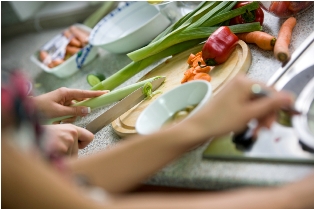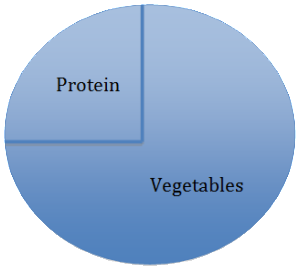 As discussed in the previous section on pH balance it is imperative that you consume enough low glycaemic index carbohydrates from vegetables and adequate protein each day. A general rule of thumb is you should have three times more vegetables than you do protein.
As discussed in the previous section on pH balance it is imperative that you consume enough low glycaemic index carbohydrates from vegetables and adequate protein each day. A general rule of thumb is you should have three times more vegetables than you do protein.
Each day you need to eat three regular meals and two between meal snacks containing protein rich foods, healthy fats and adequate low glycaemic index carbohydrate vegetables. You can use your hand for an easy measurement guide.
Three Meals Per Day
- Protein portion at each meal – the size of the palm of your hand
- Vegetable portion at each meal – three handfuls of vegetables
Two Snacks Per Day
- Protein portion – the size of two fingers
- Vegetable portion – one heaped handful

Healthy Fats
You need to have adequate healthy fats in the diet each day. Fats found in fish, seafood, nuts, seeds, coconut oil and avocado are ideal. These dietary fats will actually help your burn body fat and are essential for good health. Best of all, healthy fats help to modulate hunger and promote satiety (feeling full after eating).
Your Daily allowance of good fat is:
- A small handful of nuts and seeds
- One serve of fish, seafood or avocado daily
- 2 tablespoons of recommended healthy fats for cooking or dressing
- Fish oil supplements as prescribed
Recommended Nuts and Seeds
- Almonds
- Walnuts
- Hazelnuts
- Sunflower seeds
- Pepitas
- Pine Nuts
- Macadamias
- Sesame Seeds
- Flax/Linseeds
- Brazil nuts
- Peanuts
- Unsweetened nut butter made from any of the above
Recommended Cold Pressed Oils
- Coconut
- Virgin Olive oil
- Sesame oil
- Walnut oil
- Flaxseed oil
- Macadamia oil
Remember, if you are hungry during this program you may not be eating enough!
Always check back with these instructions to make sure that you are having enough protein, healthy fats and low glycaemic index vegetables each day.

